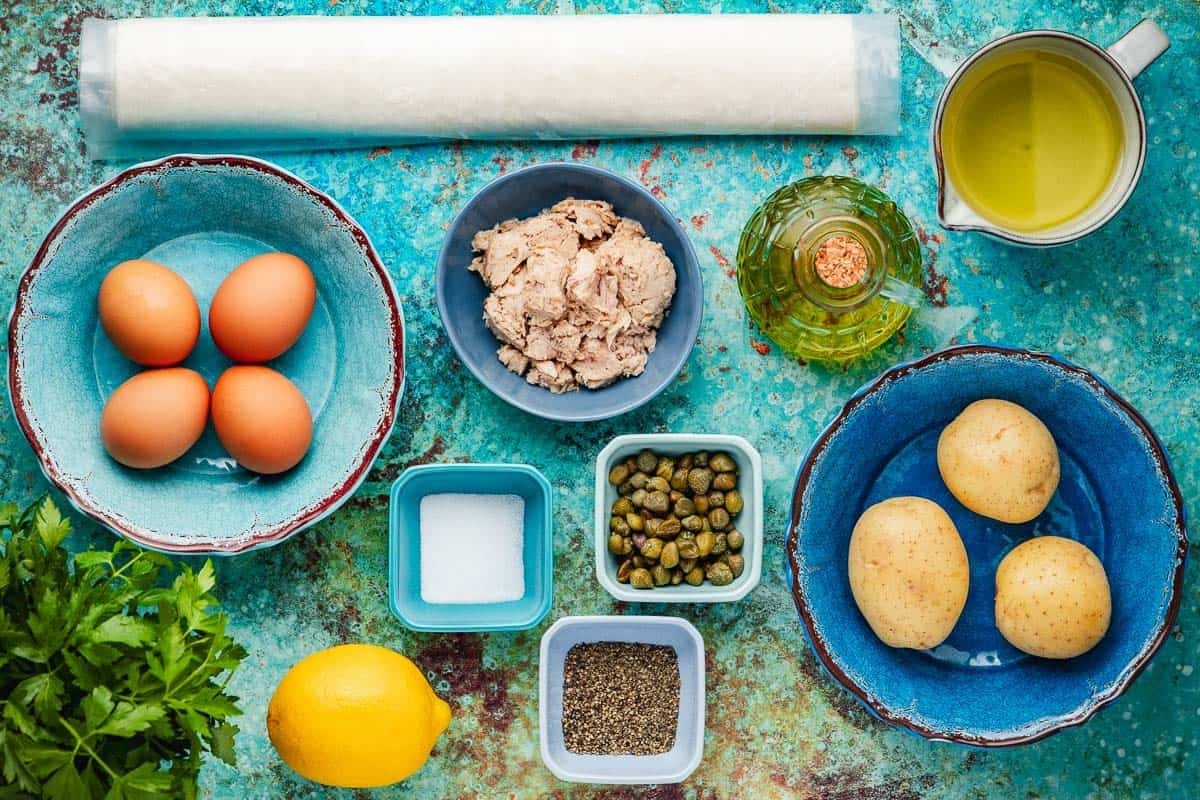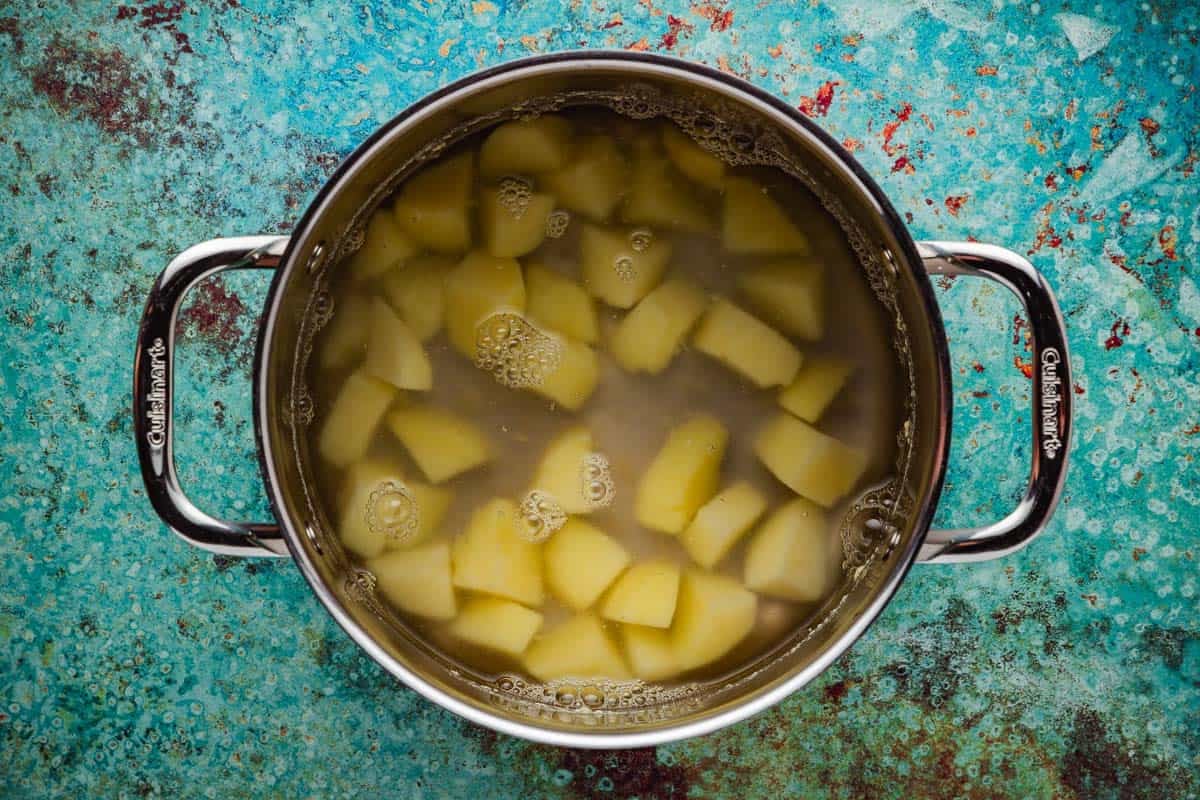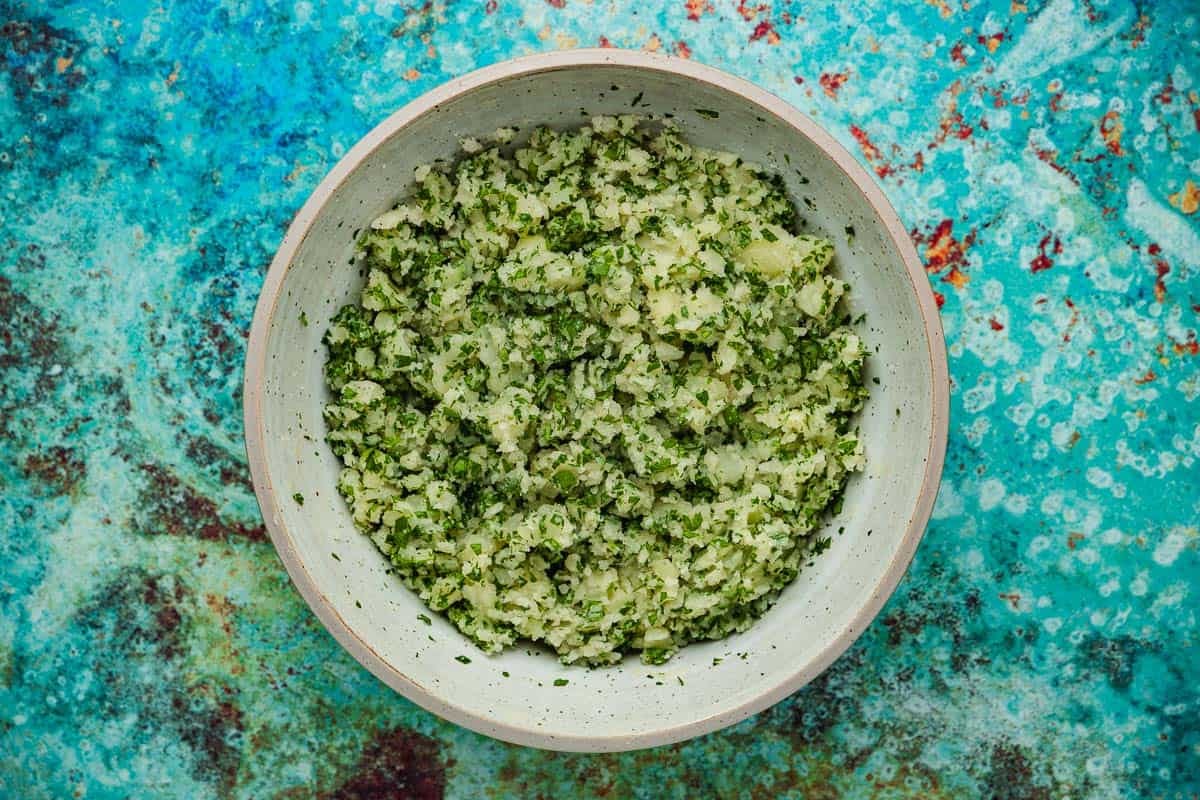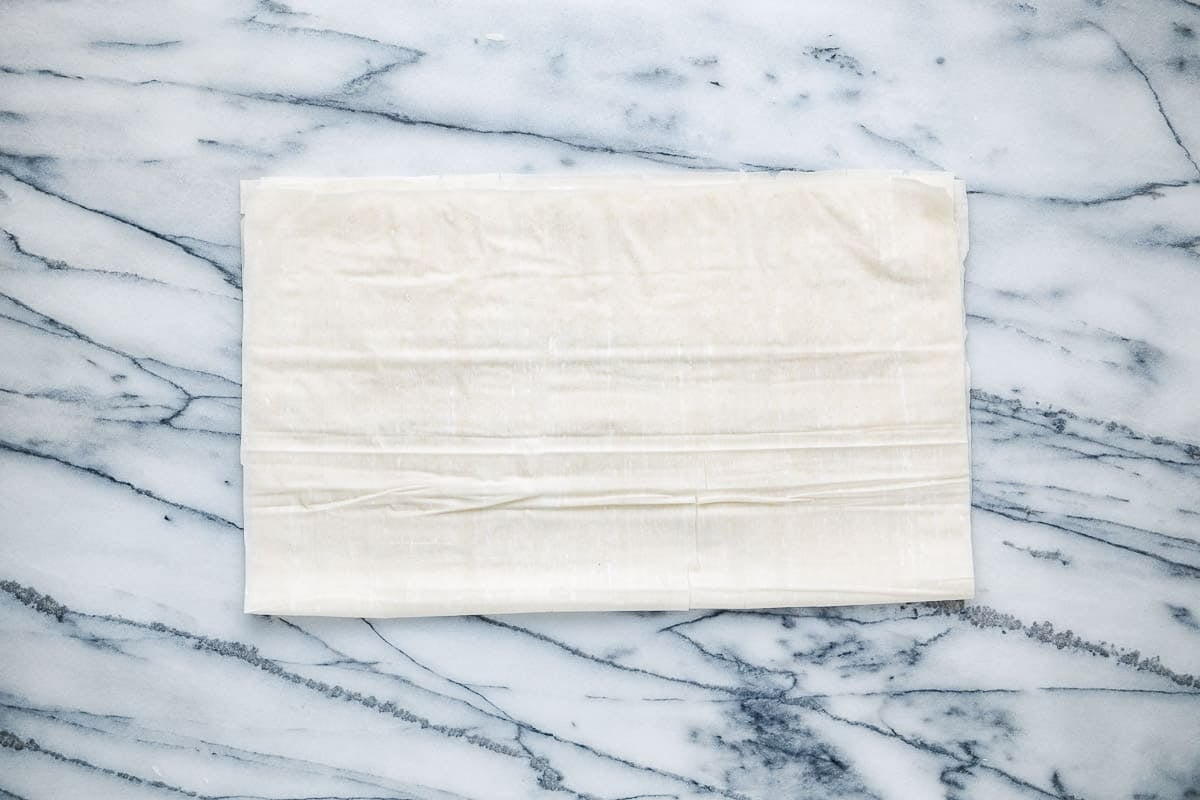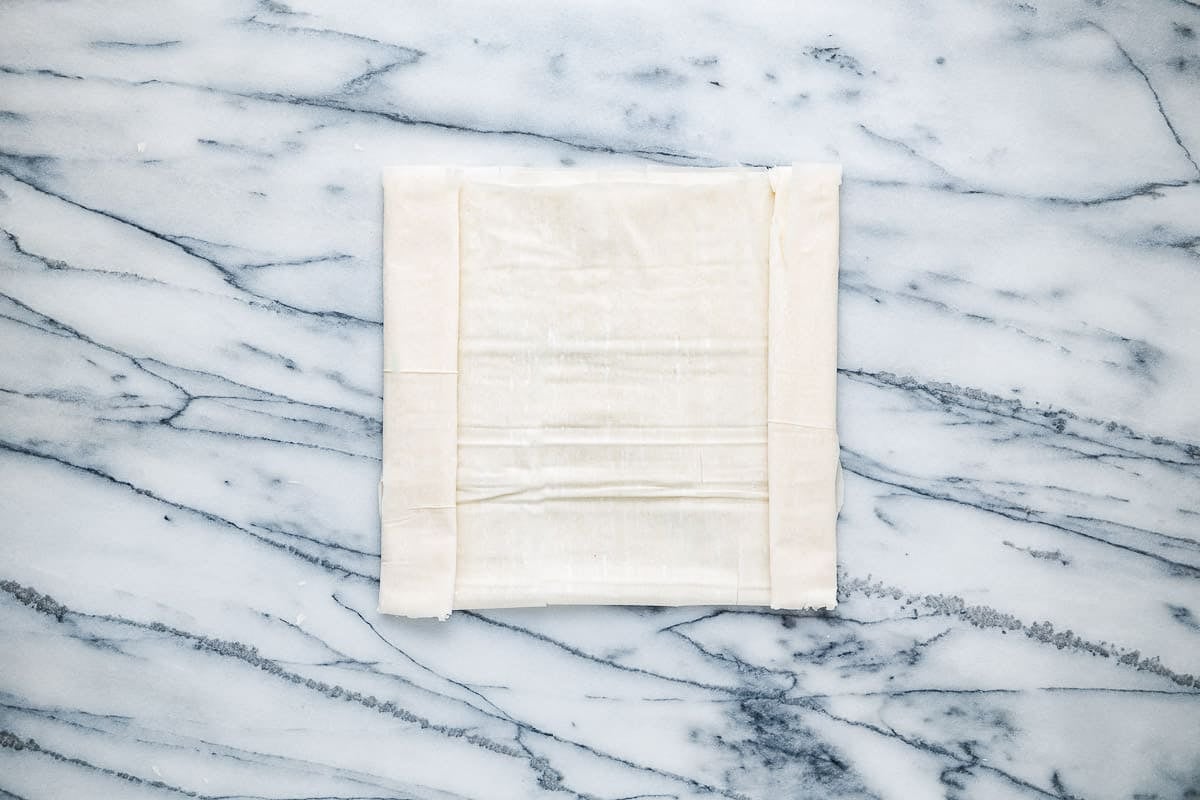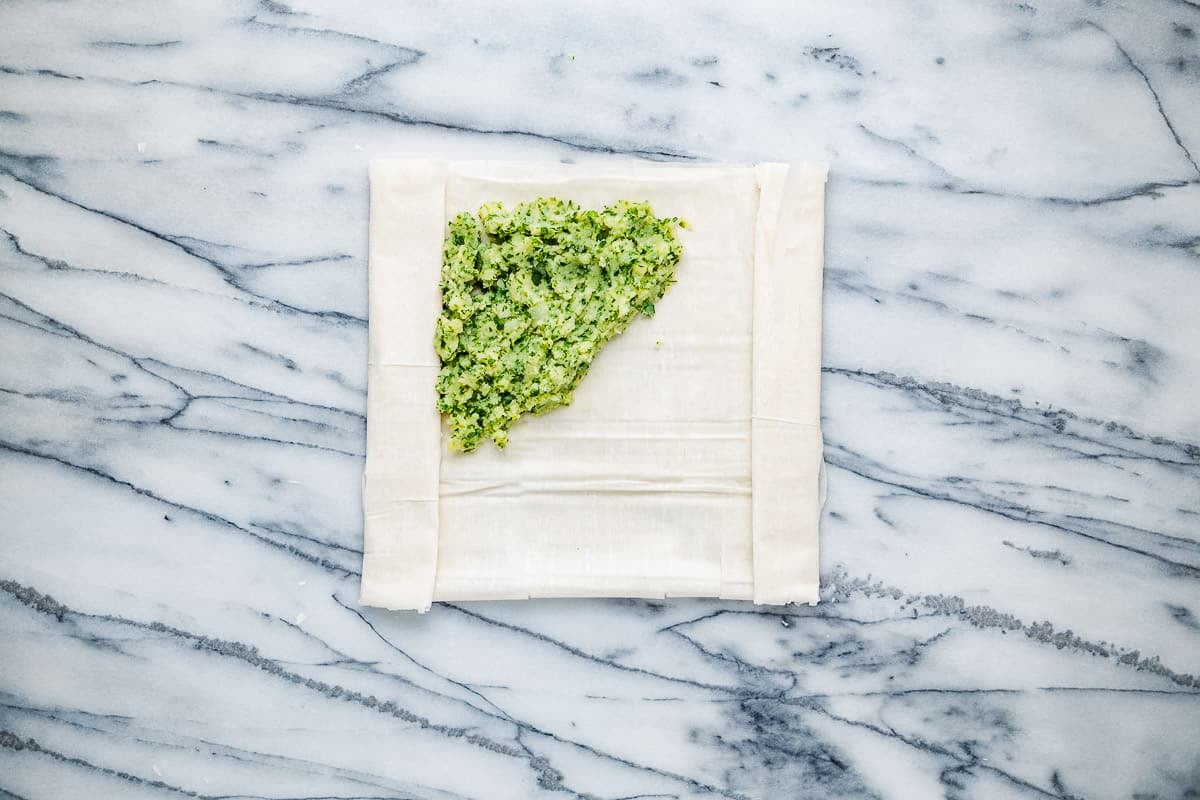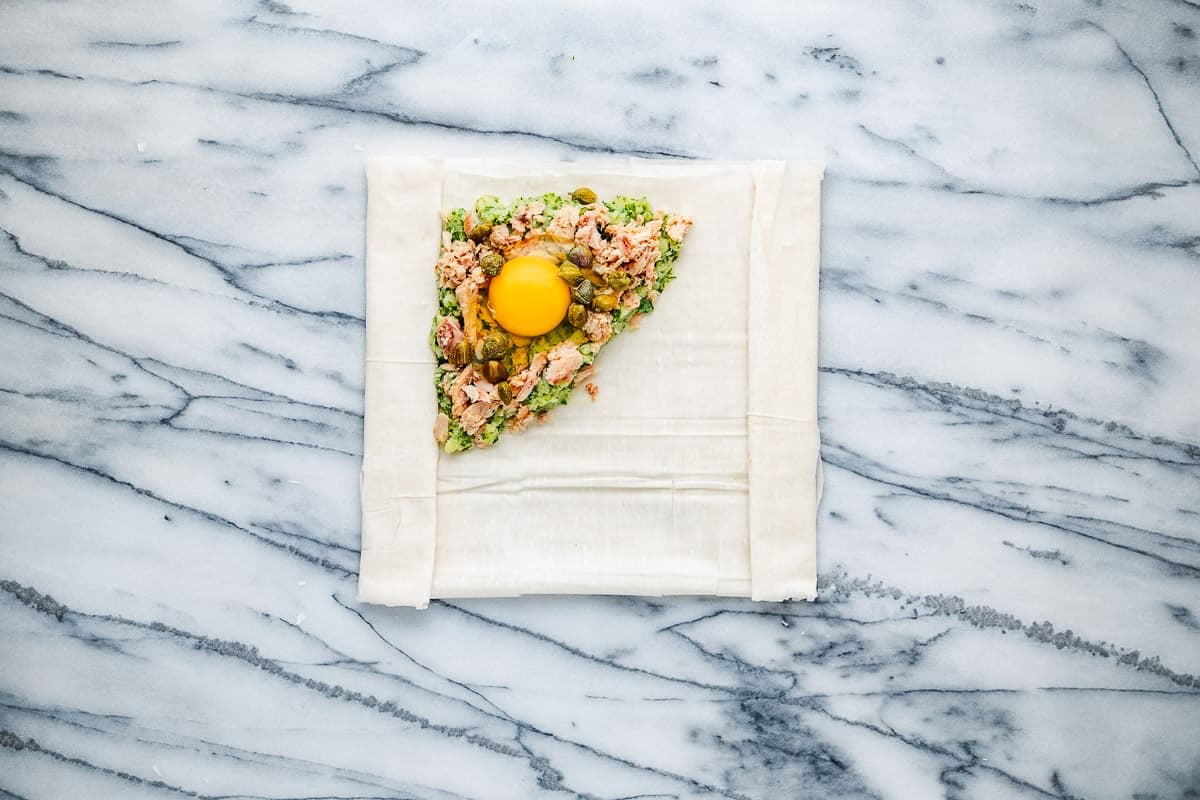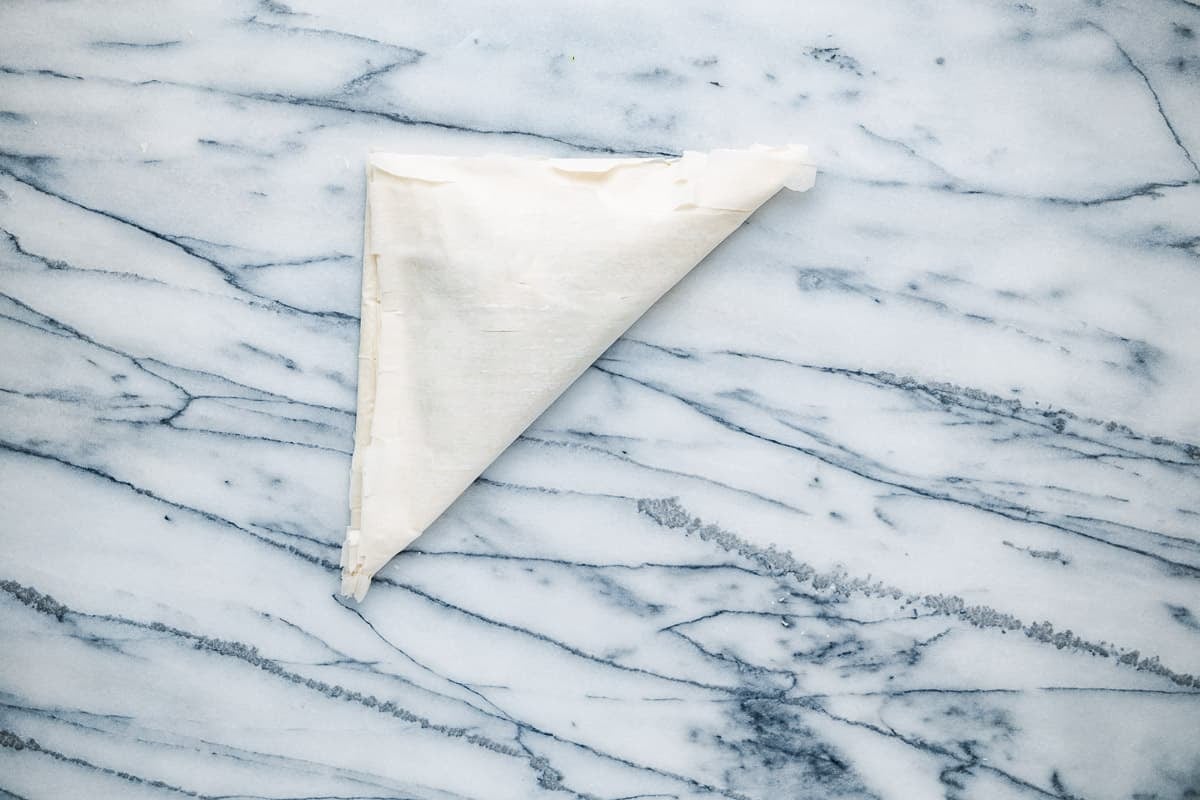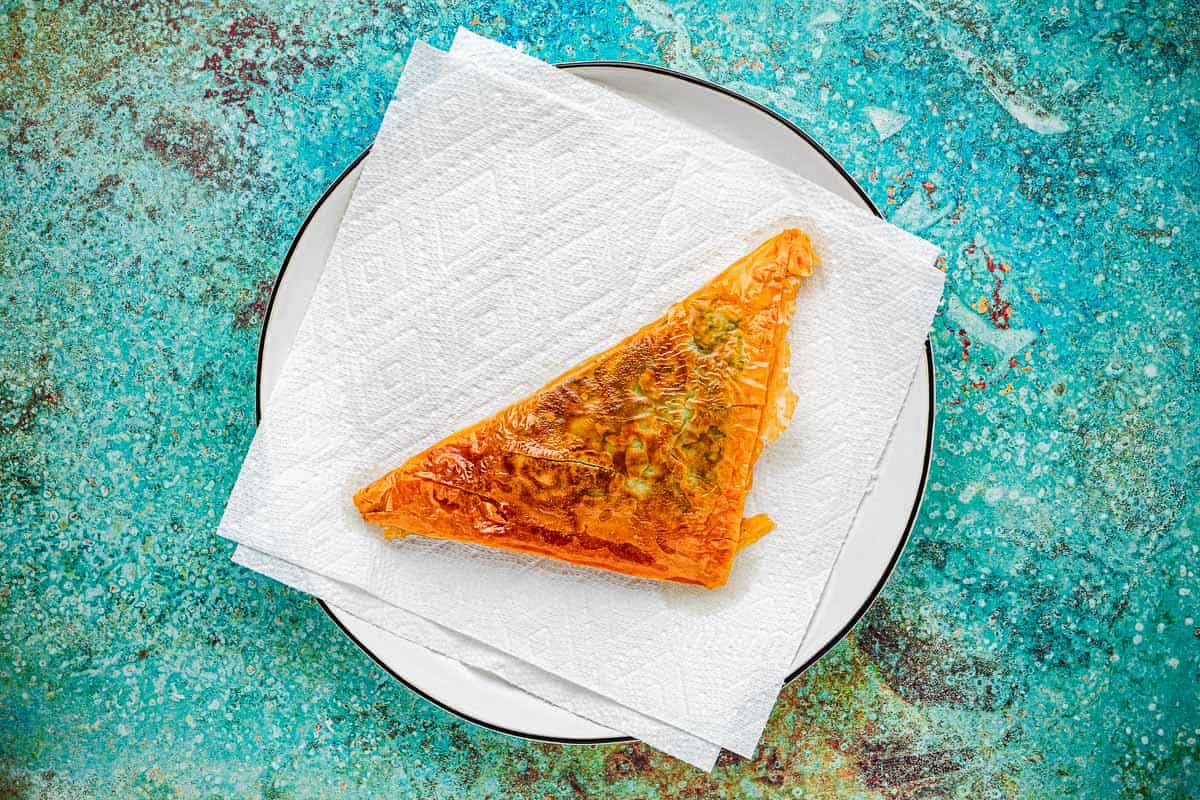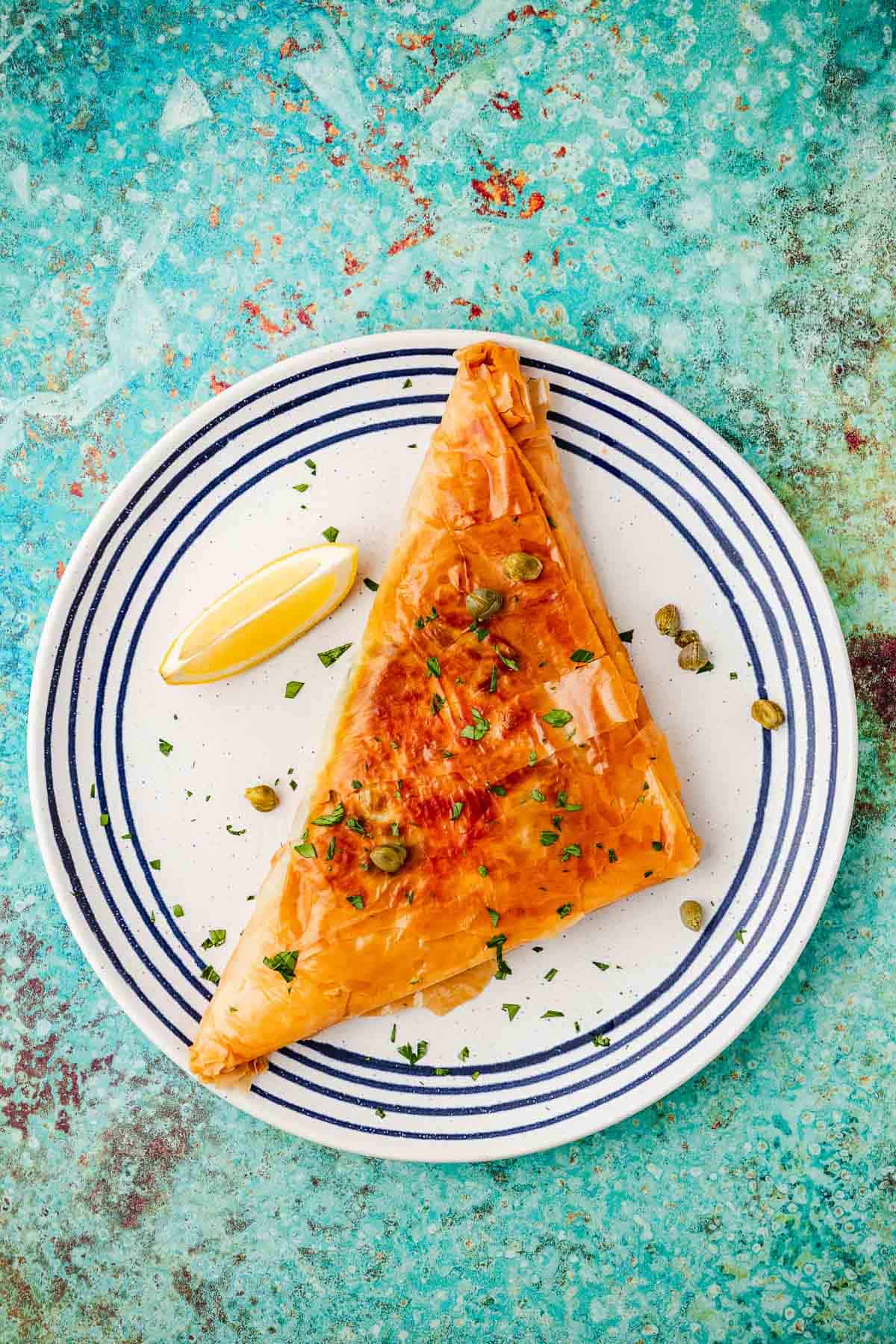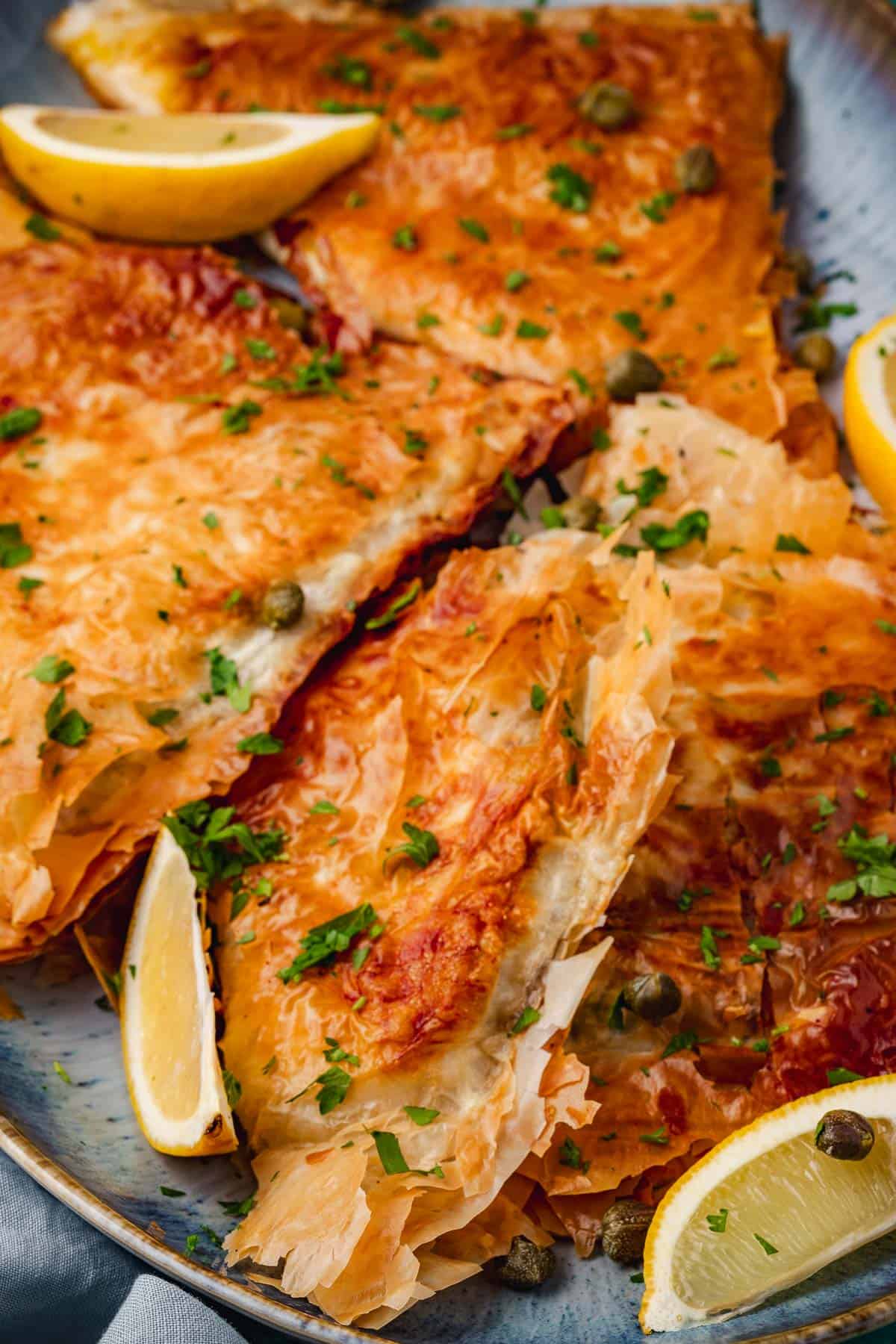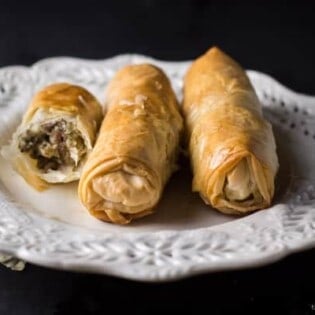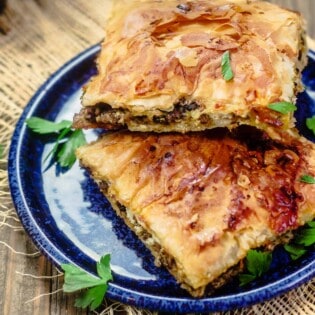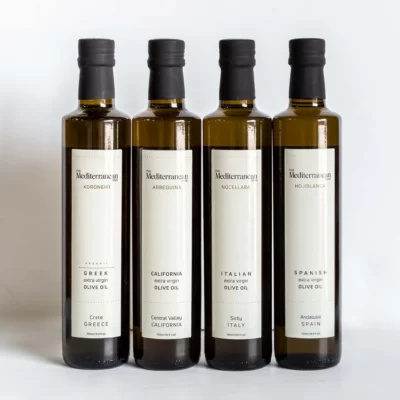There is no Tunisian feast without Brik, بريك pronounced “breek.” In addition to being a popular appetizer on just about every restaurant menu in Tunisia, this crispy and succulent dish is eaten at every iftar, the meal right after sunset to break the day’s fast during Ramadan. When I lived in Tunisia, we most often just enjoyed brik as a nice lunch out with friends between work or school. We sat together enjoying the crispy filo triangles with Slata Tounsiya and fresh baguette from the bakery around the corner. The dish itself is most likely of Ottoman origin. Even the name links Tunisian cuisine to many other Mediterranean and Middle Eastern ones, like Greek boureki or tiropitakia, Lebanese and Turkish burek, and even as far as the Balkans with boureka made by Sephardic Jews. Even though similar savory-filled pastries can be found throughout the world–think Indian samosas or all sorts of filled, fried dumplings all over Asia–it is the combination of flavors that makes Tunisian Brik au Thon such a signature national dish. I can’t decide what makes Tunisian brik so exceptional. Perhaps it’s the generous amount of fresh parsley mashed with buttery potatoes. Or maybe the tender but rich tuna, or the tangy, briny capers. Or how could I forget the most important component: the egg made so its yolk stays runny, or the delicate, crusty pastry which envelops all the goodness. I bet it’s a classic case of the sum being more than its parts. But don’t just take it from me! You can experience flaky, savory, delicious Tunisian brik for yourself in less than half an hour with a few easy-to-find pantry staples.
What You’ll Need
Brik is traditionally made with a very thin dough called malsouka, which is hard to find outside of Tunisia and France. Luckily, store bought filo dough is a great substitution, and all of the remaining ingredients are very easy to source.
Dough: If you’d like to give traditional malsouka a try, check out the bonus recipe in the section titled, “Malsouka: A Note on Brik Dough.” Otherwise, filo is a tasty substitute. Just make sure it’s defrosted ahead of time. Yellow potatoes: Work best here for their rich, buttery flavor and their waxy but velvety texture. Olive oil: Single location, extra virgin, and cold pressed is my favorite. Not much oil is used in this recipe but still it adds a lot of juiciness to the Brik filling. Check out our shop for our collection of hand-selected Mediterranean olive oils. Parsley: Used in a large quantity in this recipe. Make sure it’s Italian or flat-leaf, not the curly variety as it tends to be bitter. Keep it nice and fresh by following our tips on how to store herbs. Tuna: Use high quality tuna packed in olive oil for the juiciest Brik. Capers: Add beautiful tanginess to the inside of the Brik and you can sprinkle more on top for a pretty garnish. Lemon: Lemon juice is an absolute must. Squeeze a nice amount of it right before serving to both enhance the flavor and to cut the richness.
How to Make Brik
I am convinced this Tunisian appetizer will become your new favorite because its crispy on the outside and tender on the inside quality is utterly irresistible. Prepare yourself for a messy but fun meal that’s worth the extra napkins.
Get Ready
Defrost the filo (phyllo) pastry. Keep filo in its packaging in your refrigerator while it defrosts to prevent it from drying out. If it dries out, it will break very easily and the process will become unnecessarily frustrating, whereas if it defrosts fully first, the dough will stay more elastic and easy to work with. Boil the potatoes. Place 1/2 pound of peeled and quartered potatoes in a medium pot and cover with water. Bring to a boil over high heat, then season with 1 teaspoon of salt. Boil until they are fork-tender, about 15 minutes, then drain. Prepare the potato filling. Transfer the potatoes to a large bowl. Mash them with 2 tablespoons of olive oil and season with salt and pepper to taste. Add 1 cup of finely chopped parsley. It will feel like too much parsley but trust me, this is what makes or breaks the flavor. Let the mixture cool off a bit before using it. Prepare the remaining filling ingredients. Set up individual prep bowls to make it easier to work quickly: one for a 5-ounce can of tuna, another for 1/2 cup of capers. Get ready. Line a large plate with paper towels. In a large, non-stick skillet set over medium heat, add 1/2 cup of olive oil.
Stuff and Fold
Start the fold. Ensure your hands are dry anytime you work with filo pastry. Place 2 sheets of filo on top of each other on the counter. Fold them in half. Make a square. Fold two sides towards the center to get an approximate square shape for the base. Add the mashed potato. Place 1/4 cup of the potato filling in one corner of the prepared pastry square, making sure enough of a bare edge is left around it. Spread it in an even layer without covering more than half of the square. Add the remaining filling. Create a bit of an egg shaped well in the filling. Crack one of the eggs into a small bowl, then slide it into the well. Sprinkle tuna and capers over top. Fold and seal. Moisten the edge of the dough using your finger and a bit of water. Carefully fold the empty side over the filling to form the typical triangle shape. Light pressure along the sides will be sufficient to bind the sides together so that the filling doesn’t escape when frying.
Fry and Enjoy
Fry the brik. Now slide the whole Brik into the hot oil and quickly fry until just golden, turning once. If you are trying to achieve that nice, runny egg yolk, pay a lot of attention to your timing as it only takes about 2-3 minutes per side. Finish and serve. Immediately transfer the Brik to the towel-lined plate to dry off the excess oil. Repeat with the remaining dough and filling, cracking the egg into the bowl each time. Enjoy the brik with a nice squeeze of lemon and a sprinkling of capers and chopped parsley.
Malsouka: A Note on Brik Dough
Traditionally, Brik is made with a Tunisian pastry sheet called malsouka (also spelled malsouqa), which is round in shape. Even though people still make it at home, it can be found in every little shop and supermarket, just like rice paper or tortillas in the US. Filo is a delicious replacement but can make the pastry a bit more crumbly and fragile and oilier than the original. Other wrapper options you can try are Turkish yufka pastry. Lumpia, eggroll, rangoon or even wonton wrappers also work, just know they will be a bit thicker than the original. If you decide to go completely authentic, making a malsouqa is very simple and actually pretty fun. Think of it like you’re making a very, very thin crepe:
Make the dough. In a large bowl, whisk together 1/2 cup fine semolina, 1/2 cup all-purpose flour, 2 teaspoons of olive oil, and a pinch of salt. Add 1 cup and 1 tablespoon of warm water and mix to combine. Cook the dough. Preheat a large, dry skillet over medium-high. Dip a pastry brush into the batter, and brush the dough onto the hot, dry skillet. It’s a very thin dough. Cook for about 30 seconds. Use a spatula to transfer to a platter. Repeat until all the batter is used up. The malsouka should be paper thin. Use or store. The finished malsouqa keeps really well, wrapped up in the fridge, for up to 5 days.
Tunisian Brik Variations
Tunisian brik is typically made with tuna and capers, but the recipe itself is pretty forgiving and easy to adjust to your tastes. Here are some ways you can make this recipe your own.
Adjust the shape. If you end up with a circle-shaped wrapper of any sort, just fold a bit of all four sides in to end up with a square shape. Or you can just make your Brik in a half-moon shape by simply folding one half over the filled one, which is also quite common. Make it spicy. With any Tunisian dish, you can’t go wrong with adding some harissa for extra kick if you like. Adjust the filling. The options for fillings are almost endless. A simple egg Brik is very common as well and so is a shredded chicken and cheese filled one.
What to Serve with Brik
A nice side of Slata Tounsiya is perfect but anything crunchy and fresh, like creamy cucumber salad, lemon parmesan salad, or Maroulosalata (Greek Lettuce Salad), will work well. A small piece of crusty baguette is often offered when you order Brik from a restaurant. Hot glasses of tea with mint and pine nuts would definitely follow if you had this meal in Tunisia and it’s an easy and nice digestive to make at home as well. Browse all Mediterranean recipes.
Greek Tiropitakia (Feta Hand Pies)
Sigara Boregi (Turkish Cheese Rolls)
Phyllo Dough Meat and Feta Rolls
Phyllo Meat Pie (Egyptian Goulash)
Visit Our Shop Four of our best-selling signature olive oils, perfect for everyday use.




